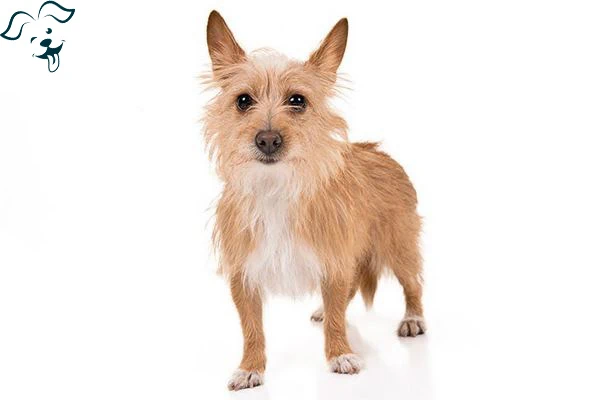CARING WITH FAMILY
|
| The level of affection a breed displays towards family members and familiar individuals can vary. Some breeds tend to be more reserved and aloof, forming a strong bond primarily with their owner, while other breeds are known for their friendly and sociable nature treating everyone they know as dear friends. It's important to note that individual personality and upbringing also play a significant role in a dog's affectionate behavior regardless of their breed. Thus, while certain breeds may have general tendencies towards being more or less affectionate each dog should be evaluated on an individual basis. |
LOVE WITH CHILDREN
Unwise
Good With Children
|
| The degree of tolerance and patience that a particular breed exhibits towards children's conduct along with their overall affinity towards families. It is essential to maintain constant supervision when dogs interact with young children or with children of any age who may not have much prior experience with dogs. |
BEHAVIOR WITH DOGS
Unwise
Good With Other Dogs
|
| It is crucial to supervise dogs when they interact or meet other dogs, regardless of their breed. Nevertheless, some breeds inherently exhibit a greater tendency to be friendly and get along with other dogs both in domestic and public environments. |
SHEDDING LEVELS & MANAGEMENT
No Shedding
Hair Everywhere
|
| The amount of fur and hair that can be expected to be shed by a breed. Breeds that shed heavily will require more frequent brushing are more likely to provoke certain allergies and will necessitate more frequent vacuuming and lint-rolling to maintain cleanliness. |
COAT GROOMING STANDARDS
|
| The recommended frequency for bathing, brushing, trimming and other forms of coat maintenance in different breeds. It is important to consider the amount of time, patience and budget you can allocate for these grooming tasks when assessing the required effort. Additionally, it is essential for all breeds to regularly trim their nails. |
DROOLING INTENSITY
Less Likely to Drool
Always Have a Towel
|
| The tendency of a breed to drool. If you have a preference for cleanliness, breeds that have a tendency to leave trails of drool on your arm or create large wet spots on your clothes may not be suitable options for you. |
COAT STYLES GUIDE |
| Wiry, Smooth |
| COAT SPECTRUM |
| Medium |
FRIENDLINESS
Reserved
Everyone Is My Best Friend
|
| The level of friendliness a breed is likely to exhibit towards strangers. Certain breeds may be reserved or cautious around unfamiliar individuals, regardless of the setting, whereas other breeds are generally eager to greet new people whenever they are present. |
LIVELINESS
Only When You Want To Play
Non-Stop
|
| The level of enthusiasm a breed is likely to display towards play, even beyond the puppy stage. Certain breeds will maintain their desire to engage in activities like tug-of-war or fetch well into adulthood, while others will prefer to spend most of their time relaxing on the couch with you. |
VIGILANCE INTENSITY
What's Mine Is Yours
Vigilant
|
| The inclination of a breed to notify you of the presence of strangers. Such breeds are more prone to react to any potential threat, whether it be the mailman or a squirrel near the window. However, these breeds are also likely to become more comfortable with strangers once they enter the house and are accepted by the family. |
ADAPTATION CAPACITY
Lives For Routine
Highly Adaptable
|
| The adaptability of a breed to handle change. This includes adjustments to living conditions, noise levels, weather conditions, daily routines and other variations that occur in their day-to-day life. |
OBEDIENCE LEVEL
Self-Willed
Eager to Please
|
| The ease of training and the willingness of a breed to learn new things. Certain breeds are naturally inclined to please their owners and are eager to learn, while others may have a more independent nature and prioritize their own desires over following commands or learning new skills. |
STAMINA LEVEL
|
| The level of exercise and mental stimulation required by a breed. High-energy breeds are always up for the next adventure, enthusiastically spending their time running, jumping and playing throughout the day. On the other hand, low-energy breeds tend to be more relaxed and enjoy leisurely activities, resembling couch potatoes who are content to lounge around and snooze. |
VOCALIZATION
|
| Medium |
LEARNING CURIOSITY LEVEL
Happy to Lounge
Needs a Job or Activity
|
| The level of mental stimulation required by a breed to maintain their happiness and overall well-being. Purpose-bred dogs often have jobs that involve decision-making, problem-solving, concentration and other mental qualities. Without adequate mental exercise, these dogs may create their own activities to keep their minds occupied, which may not align with the projects their owners would prefer. |
| COLORS |
|
Description
|
Registration Code
|
|
Yellow
|
232
|
|
Fawn
|
082
|
|
Chestnut
|
070
|
|
Gray
|
100
|
|
Gold
|
091
|
|
Red
|
140
|
|
Orange
|
133
|
|
White & Black
|
202
|
|
White & Gray
|
210
|
|
White & Orange
|
213
|
|
White & Red
|
214
|
|
White & Fawn
|
207
|
|
White & Gold
|
208
|
|
White & Yellow
|
501
|
|
White & Chestnut
|
499
|
|
| PATTERNS |
|
Description
|
Registration Code
|
|
White Markings
|
014
|
|






























FRIENDLINESS
LIVELINESS
VIGILANCE INTENSITY
ADAPTATION CAPACITY